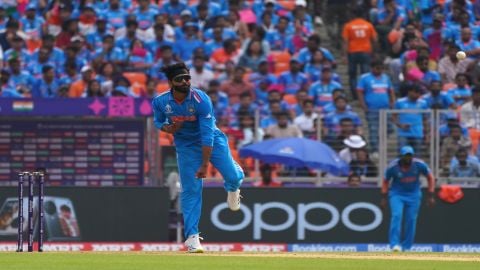
Men’s ODI WC: Spinners rule the roost and throw challenges to teams in initial stage of tournament (Image Source: IANS)
ODI World Cup: If there’s one theme which stands out from the initial stage of the 2023 Men’s ODI World Cup, it is spinners emerging as a crucial test for teams to pass if they were to win matches in the tournament and keep themselves in the reckoning for the knockouts.
As per the data from 15 matches of the tournament given to IANS by Cricviz, the official analytics provider of the World Cup, some patterns emerge: off-spin and orthodox spin are ruling the roost, followed by leg-spin and unorthodox spin.
If by 2020, wrwrist spinnersere calling the shots in ODIs, then the 2023 World Cup has seen off-spin and orthodox spin come back into the picture and take major space in it.

